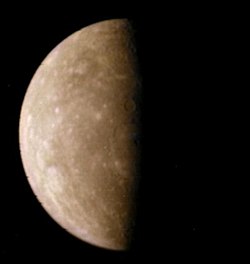Sebeg
| Sebeg in hieroglyphics | ||||||||
|---|---|---|---|---|---|---|---|---|
| Middle realm |
|
|||||||
|
||||||||
| New kingdom |
|
|||||||
Sebeg / Sebgu Sbg (f) |
||||||||
Seba (en) Set Nb3 (n) St Star of Seth |
||||||||
| The planet Mercury as the star of Seth | ||||||||
Sebeg (also Sebgu ) is another form of the ancient Egyptian gods Seth and Thoth . In ancient Egyptian mythology and ancient Egyptian astronomy , Sebeg symbolized the planet Mercury and was mainly considered the star of Seth.
Mythological connections
Groove book
In the planetary chapter of the Nutbuch , lines 153 to 159 report on a cosmic dispute between Horus and Seth at sunset , which can finally be resolved through the mediation of Thoth. The other heavenly "followers of Seth" are, like Seth, located in the western sky. Chepesch ( Big Dipper ), the constellation of Seth, is located in the northern sky, which is why only the planets Mercury or Venus could be considered at sunset .
In this dispute, the planet Venus is assigned as the star of the bark of Benu , which made it possible to reliably identify Mercury as the star of Seth.
Middle Kingdom to Greco-Roman times
The epithet “Star of Seth” is also documented for Sebeg in the planet lists of the New Kingdom . Due to the reliable identification of the other planets and their equations with ancient Egyptian gods, Mercury could be assigned to the god Seth as the only remaining planet.
In the Book of the Dead 136, as in the coffin texts of the Middle Kingdom, the determinative of a star staircase is documented, which the deceased uses to get to Sebeg. In a variant, the star staircase acts as a defense against the surf .
In the Greco-Roman times , Sebeg is also known as the “Star of Thoth”. A rare iconographic representation has been largely destroyed. In front of the god is a six-legged bird with a serpentine beak and four feet.
See also
literature
- Christian Leitz u. a .: LGG , vol. 6 . Peeters, Leuven 2002, ISBN 9-0429-1151-4 , p. 266.
- Alexandra von Lieven : Floor plan of the course of the stars. The so-called groove book. The Carsten Niebuhr Institute of Ancient Eastern Studies u. a., Copenhagen 2007, ISBN 978-87-635-0406-5 ( Carsten Niebuhr Institute Publications 31), ( The Carlsberg Papyri 8).
